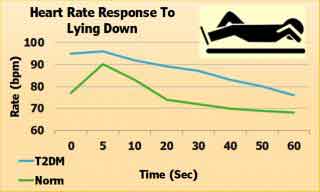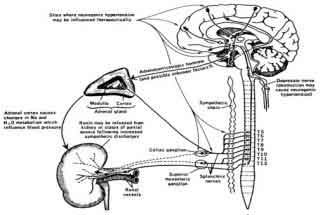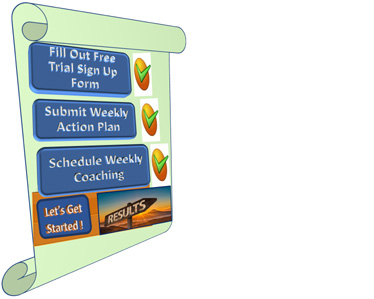Telehealth Diabetes Reversal And Improved Heart Rate Responses | Free Trial In Texas

Quick Heart Rate responses signal good health.
Reflex control of heart rate depends on healthy neural, metabolic, hormonal and muscular function. Much more than just good health of heart and blood vessels.
We look for low Heart Rate while resting, prompt increase when exercise begins and quick reduction when it ends.
Improved Heart Rate Responses tell us Type 2 Diabetes is reversing.
To learn more about programs Herd Healthcare offers, our website is:
www.herdhealthcare.com
Reflex Control Of Cardiovascular And Renal Function
Circulation of blood is tightly controlled. Pressure sensors in the arteries of the neck are connected to the brain. From there, reflex signals are sent by nerves to the heart and blood vessels all over the body. Reflexes increase and decrease heart rate and amounts of blood pumped by each beat of the heart. Arteries and veins are contracted and relaxed to control where blood flows and how much is returned to the heart.
Cardiac Nerves control heart rate and strength of contraction. There are different connections to slow down and speed up the heart.
 Signals to slow down are carried in the vagus nerve. Those signals act very quickly and stop just as quickly. When everything is functioning well, the heart rate is low during rest and recovers quickly when exercise ends.
Signals to slow down are carried in the vagus nerve. Those signals act very quickly and stop just as quickly. When everything is functioning well, the heart rate is low during rest and recovers quickly when exercise ends.
Signals to speed up and strengthen contractions are carried in separate para-spinal nerves. Signals carried by para-spinal nerves to the heart increase its rate at rest, augment its rate and strength during exercise and prolong its recovery when exercise ends.
The signals to speed and slow the heart are quite separate. Signals to slow the heart act very quickly and stop just as quickly. Signals to speed and strengthen the heart act more slowly.
The Figure below illustrates how poor health affects Heart Rate during exercise and recovery from exercise. Cardiac para-spinal nerves increase heart rate before exercise begins and slow the rate of recovery when exercise ends. Cardiac nerves that decrease heart rate act more quickly.

When poor health disturbs the function of organs and tissues, the brain sends signals everywhere that alter metabolism, muscle contraction and hormone secretion. Signals carried by para-spinal nerves to the heart increase its rate at rest, augment its rate and strength during exercise and prolong its recovery when exercise ends.
The heart rate recovery after exercise indicates poor health and high risk of disease and premature death. One of the early studies of this indicator was reported by clinical investigators in Cleveland.
Men and women referred into the Department of Cardiology were examined and then followed for 6 years. A total of 2,428 men and women with an average age of 57 years were included. They were studied with exercise test, tomography and radioactive scintigraphy.
 Immediately after peak heart rate was reached during exercise testing, patients continued to walk slowly for several minutes. The median value for heart rate recovery was 17 beats per minute. As shown in the Figure, those with an abnormal value equal to or less than 12 beats per minute were at increased risk of death in the next 6 years. Their survival rate was about 50%. Those with a recovery rate equal to or less than 5 beats per minute were at about 75% risk of death during follow-up.
Immediately after peak heart rate was reached during exercise testing, patients continued to walk slowly for several minutes. The median value for heart rate recovery was 17 beats per minute. As shown in the Figure, those with an abnormal value equal to or less than 12 beats per minute were at increased risk of death in the next 6 years. Their survival rate was about 50%. Those with a recovery rate equal to or less than 5 beats per minute were at about 75% risk of death during follow-up.
More recent studies have examined heart rate recovery immediately after stopping exercise. They showed that rapid decrease in the first 10 seconds after stopping is the strongest predictor of good health and prolonged life. The decrease in the first 10 seconds shows the strength of signals slowing the heart rate.
A low resting heart rate and quick heart rate recovery after exercise both signal good health.
Change in Body position also affects cardiac function. When lying down, blood flows easily from veins in the legs and abdomen back to the heart. When standing, blood pools in legs and abdomen until veins constrict and push blood back up to the heart. The short time it takes to adjust circulation when lying down or standing up causes blood pressure to increase or decrease.
Heart rate responds quickly to abrupt changes in blood pressure. How quickly heart responds tells us something about general health as well as cardiovascular function.
Clinical investigators in the UK have studied effects of body position on heart rate in about 30 normal men and women and 25 patients with type 2 diabetes.
The first Figure shows how heart rate decreased upon lying down. The initial upward surge in heart rate was caused by muscular movements displacing blood  from veins into the heart. During the first minute, heart rates in patients with diabetes was not much affected because the signals to slow the heart were countered by signals maintaining high resting heart rates.
from veins into the heart. During the first minute, heart rates in patients with diabetes was not much affected because the signals to slow the heart were countered by signals maintaining high resting heart rates.
Lying down caused a decrease in heart rates of normal subjects and patients with diabetes. However, the normal subjects had a pronounced effect from withdrawing stimuli to slow heart rate while muscles contracted during change in posture.
The second Figure shows how heart rate increased upon standing up. Again, the initial upward surge in heart rate was caused by muscular movements displacing  blood into the heart. The patients with diabetes had gradual adjustment to the higher heart rate. However, the normal subjects quickly adjusted to a new higher heart rate.
blood into the heart. The patients with diabetes had gradual adjustment to the higher heart rate. However, the normal subjects quickly adjusted to a new higher heart rate.
Here, again, a low resting heart rate and quick heart rate recovery after change in body position both indicated normal good health.
Measurement of heart rate at rest and during change in body position gives useful information without strenuous exercise testing.
 Renal Nerves also are affected by reflex nerve adjustments to changes in health and normal function. The excretion of sodium and potassium are affected by reflex nerve stimulation.
Renal Nerves also are affected by reflex nerve adjustments to changes in health and normal function. The excretion of sodium and potassium are affected by reflex nerve stimulation.
Also, the same reflexes that increase heart rate and strength of contraction, activate the renin-angiotensin system. This system is critical in the regulation of sodium balance, fluid balance and blood pressure regulation.
Reflex Control Of Hormones And Metabolism
Adrenal glands also are affected by abnormal reflex nerve stimulation. The outer regions of adrenal glands release cortisol and other hormones which regulate metabolism.
The inner regions of adrenal glands release hormones which augment and prolong the effects of nerves like those stimulating heart rate and strength of contraction.
The Pancreas also is controlled by reflex nerve stimulation. The vagus nerve which acts to slow the heart beat also acts to increase secretion of insulin. The para-spinal nerves which act to increase heart rate also act to decrease insulin secretion.
Summary
Reflex control of heart rate and strength of contraction is well known. It’s an important part of adjusting to exercise, posture and ambient temperature. We’re also aware of connections between cardiovascular function, mood and emotions.
We’re less aware of long-lasting connections between reflex nerve stimulation, metabolism, hormonal activity, muscular contraction and cardiovascular function.
Heart rate and response to exercise, posture and sleep indicate present quality of health and prospects for future good health.
A low basal heart rate and quick, substantial heart rate responses during the day all signal good health.
 We are pleased to share our blog articles with you, and we are always interested to hear from our readers. Our website address is: www.herdhealthcare.com
We are pleased to share our blog articles with you, and we are always interested to hear from our readers. Our website address is: www.herdhealthcare.com




